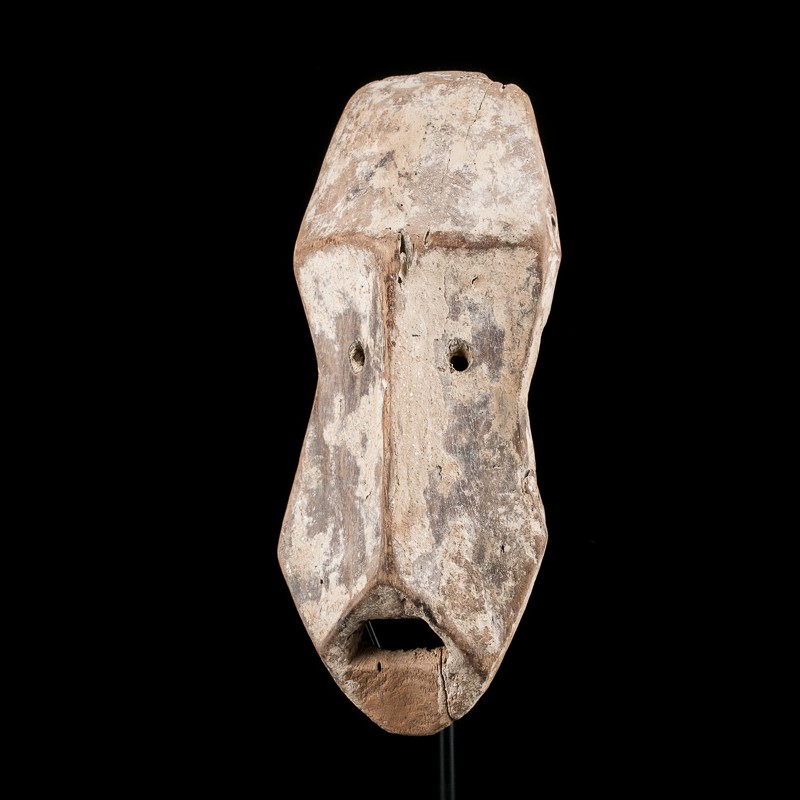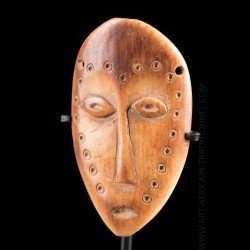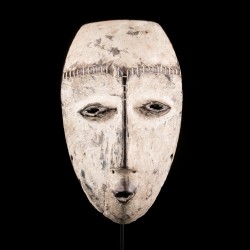




















This African mask intended for Bwami initiation is distinguished by a truly remarkable geometric treatment compared to classic Lukwakongo masks. An example of a Lukwakongo mask with the same guidelines is known at the Royal Museum for Central Africa. It is a small mask - RG 62.46.1 collected by Nicolas De Kun - with a horizontal arch crossing the mask right through.
From this arch, the bridge of the nose descends to the philtrum to subdivide into two and produce a triangular mouth.
De Kun's mask was collected in the southwest of Pangi territory, not far from Lubile. Traditional masks of this type are linked to the kongabulumbu rank within the Bwami initiation society but are not its emblems. They are actually that of a higher grade than the latter.
Lega masks can have many uses and meanings depending on the context in which they appear. During Bwami initiations, the masks - lukwakongo, idimu, kayamba, muminia, lukungu - are attached to different parts of the body or on barriers; they are also exhibited, dragged on the ground or worn on the forehead. The initiate uses these objects to instill in young people the moral and social codes necessary for community life through well-defined aphorisms and characters, like a puppeteer.
Data sheet
You might also like

This African mask intended for Bwami initiation is distinguished by a truly remarkable geometric treatment compared to classic Lukwakongo masks. An example of a Lukwakongo mask with the same guidelines is known at the Royal Museum for Central Africa. It is a small mask - RG 62.46.1 collected by Nicolas De Kun - with a horizontal arch crossing the mask right through.
From this arch, the bridge of the nose descends to the philtrum to subdivide into two and produce a triangular mouth.
De Kun's mask was collected in the southwest of Pangi territory, not far from Lubile. Traditional masks of this type are linked to the kongabulumbu rank within the Bwami initiation society but are not its emblems. They are actually that of a higher grade than the latter.
Lega masks can have many uses and meanings depending on the context in which they appear. During Bwami initiations, the masks - lukwakongo, idimu, kayamba, muminia, lukungu - are attached to different parts of the body or on barriers; they are also exhibited, dragged on the ground or worn on the forehead. The initiate uses these objects to instill in young people the moral and social codes necessary for community life through well-defined aphorisms and characters, like a puppeteer.



